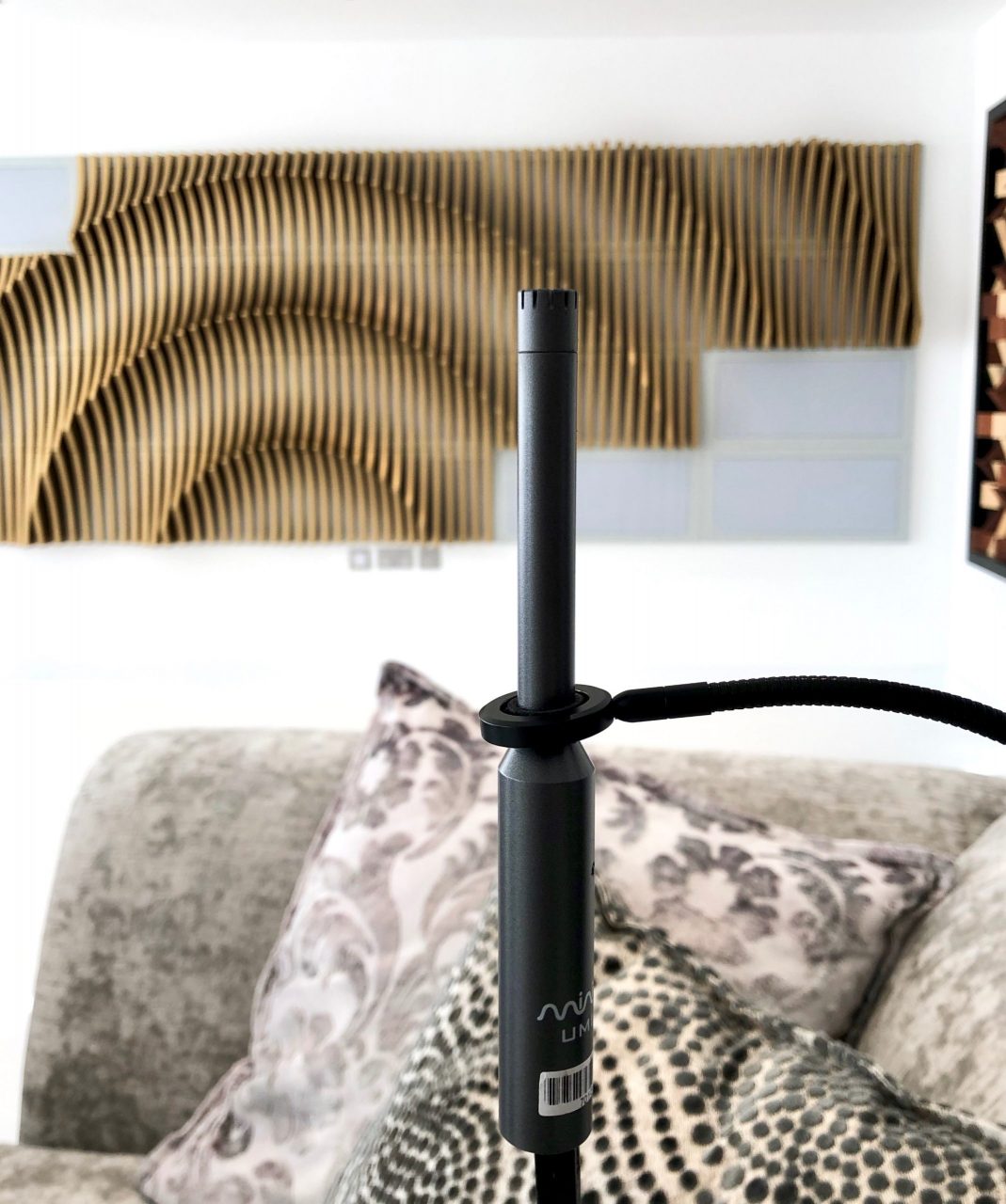Good home cinema bass and understanding how low-frequency sound waves behave in small rooms are complex subjects! But, even when you have engaged a professional home cinema installer, it is sometimes helpful and interesting to have a basic understanding of the important issues. Guy Singleton gives an overview of some of the considerations of bass or LFE (low-frequency effects).
Guy is a veteran of the industry and is known as a subject matter expert in home cinema design. He has taught home cinema design for our governing body CEDIA across four continents. He has been involved at a technical level in the definition of industry standards and has been involved in the production of white papers. Guy was also the inventor of industry-acclaimed software “The Cinema Designer”, which was subsequently acquired by CEDIA. The tool is now used by thousands of our peers, across the globe.
If you can’t explain it simply, you don’t understand it well enough.
Albert einstein
The Technical Part
Sound travels at 345 m/s or 1131 ft/s. The average human hearing can detect sounds in a frequency range of approximately 20Hz to 20kHz. Wavelength is defined as the length of this pattern for one cycle, and because we can fit 20 cycles into the distance of 345 meters, the wavelength for 20 Hz is 345 meters divided by 20, which is roughly 17 meters.
Here’s how to work this out (this is a rule of thumb, more than an actual calculation):
- Take the length of the room and double it.
- Divide that into the speed of sound – that gives you your first fundamental.
- Each fundamental is a multiple of that.
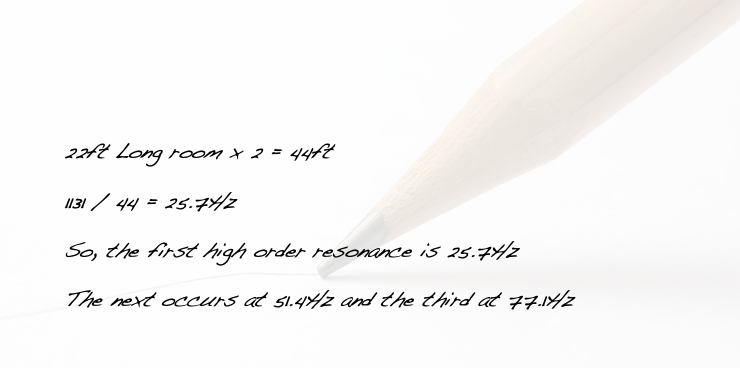
If these large wavelengths collide with a boundary of a solid structure, say a concrete wall, then they will inevitably rebound. They could potentially collide with other sound waves.
When Wavelengths Collide
If those waves were to collide, there is a very real potential that they could cancel each other out and cause a null. This would mean that if you were to stand or sit in that area (possibly only a few inches) then you would literally hear ‘no low-frequency energy’ or bass.
That is just one frequency. Imagine how that scenario affects multiple frequencies and how complex that issue becomes, with multiple reflections and standing waves.
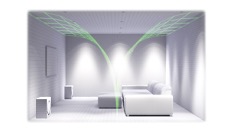
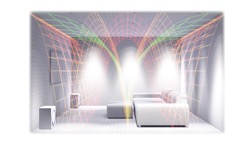
You could potentially hear great home cinema bass in one seat and no bass in others. The outcome of this phenomenon is termed MSV (mean spatial variance). Achieving seat-to-seat uniformity is one of the fundamental objectives of a good design.
The correct design, specification and placement of the subwoofers (low-frequency speakers) is so very important. Similarly, it is vital that you “treat” the room, to improve the acoustic responses. Here is a blog post that deals with the important subject of room treatments.
But for the purposes of context, we might just take a minute to talk about the characteristics of the room.
Room Acoustics and Treatments in relation to Home Cinema Bass
Imagine popping a balloon and timing how long it took for the reverberation (or echo, as some people would refer to it) to decay. In a room made of glass, this would reflect from every surface and eventually decay or die out in a few seconds.
You should control reverberation, wherever possible. When you hear reflected sounds, even only a few milliseconds after the direct sound, it is very confusing and causes an unpleasant muddled effect.
Hard ‘bright’ surfaces and reflective materials within a room will undoubtedly increase the reverberation issue.
With the addition of some absorption materials, placed appropriately, you may be able to start to control that environment. Every material has an absorption, diffusion and reflection coefficient value, which allows the room designer to calculate and predict how that room will behave.
RT60
We can calculate the time that it takes for the sound to decay and we call that the RT60 time. This is the time it takes for an impulse response to decay 60db (hence the term RT60). The target is somewhere in the region of 0.5 seconds.
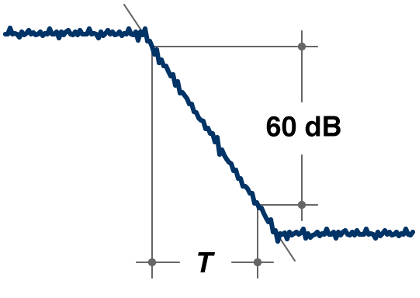
The correct selection of absorption panels and the strategic placement of those panels will incrementally improve the behaviour of the environment. Electronic room correction cannot cure this issue. It must be overcome during the design and construction phase.
(This blog post doesn’t cover the topics of diffusion, reflection, or bass management, but you should also address them during the design stage.)
Good Practice for Home Cinema Bass
Certainly, the best way to achieve high-performance home cinema bass is to design the room well from the outset. Your home cinema expert should be evaluating the room, pre and post-treatment. They should be able to give you the calculations to support the acoustic treatment design and product specification. Good home cinema design is really not about a kit list of expensive components. No matter how much the equipment costs, if the initial design is flawed, the system will be a disappointment.
The final point I would make is that, for the reasons I have touched on above, having multiple subwoofers, rather than one, is much better. You should calibrate the subwoofers correctly, utilising suitable settings for delay and gain. This will ensure good bass management. A good design will deploy more than one subwoofer. This will turn a mediocre experience into one with trouser-flapping, chest-thumping, heart-racing home cinema bass!
In Conclusion
This post has hopefully provided a little insight into some of the considerations related to LFE and home cinema bass.
You need an environment that isn’t too reflective or absorptive. You’ll need the seats located out of null (you can calculate this before the layout). It’s important to have multiple subwoofers. And a good understanding of Sabine mathematics!
There are technical pitfalls to avoid, so it is essential to get the design right. Once you have achieved a well-considered design, you can turn your attention to the correct calibration of the components. A well-performing LFE channel will impress even the most doubtful audience, leaving them with a powerful and memorable experience.
For over two decades, we have been installing home cinemas with punchy, powerful home cinema bass. We can because we are…Imagine This.
Further Reading
For further reading, please see our article What’s the difference between a media room and a home cinema? or for a technical article, how about Home Cinema Sound – Dynamic Range & Noise Floor 101? Here is Guy’s article on Home Cinema Dialogue and Speech Intelligibility. For something different, here is an article from our archives From the Imagine This archives: Our 20-Year Anniversary.
(Additionally, if there is a topic you would like us to address in our news articles, please let us know using the contact form below.)

